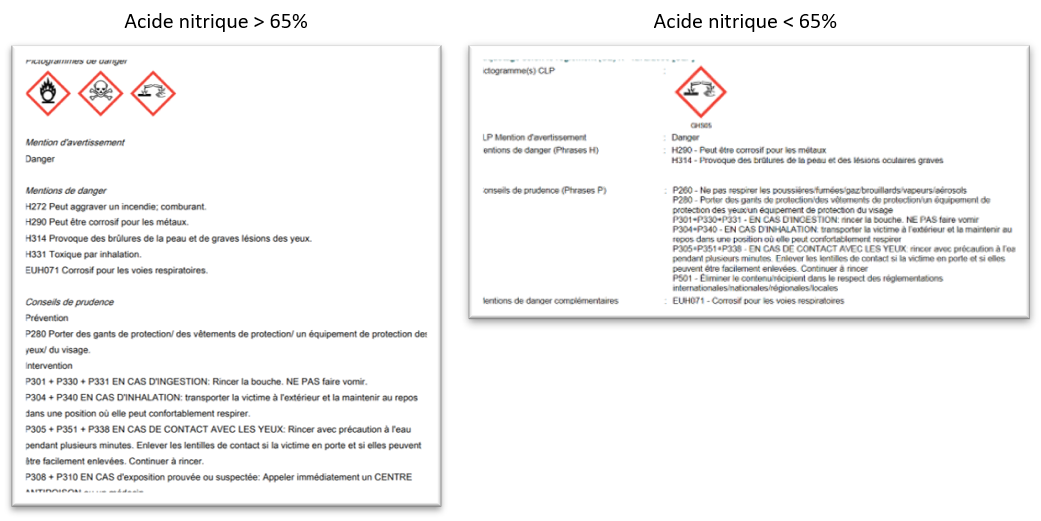Is nitric acid now classified as explosive?
When communication takes precedence over expertise...
Is Nitric Acid Classified as an Explosive?
"A woman burned alive after a canister of acid exploded in a high school in Vedène" - France Bleu - 05/26/21 - (link)
"Vaucluse. An acid canister explodes in a high school, an employee burned" - Actu.fr - 05/26/21 - (link)
The incident is dramatic, and I hope the victim's physical and psychological aftereffects will be as minimal as possible.
I am also surprised to learn that nitric acid ... explodes!
A nitric acid solution is categorized based on the % of nitric acid:

Always corrosive, the product is also, depending on the % of acid, potentially oxidizing. As a reminder, an oxidizing product facilitates or maintains the start of a fire. The product is neither explosive nor flammable! It is not classified under ATEX either. I propose to train these journalists on ADR!
The Safety Data Sheet (SDS) contains all the information related to a product. The white diamonds with a red border correspond to the European CLP classification. This mandatory label for sale authorization on the market is aimed at end-users (individuals or professionals) but also at everyone who needs to handle or use these products (logistics, maintenance, ...). The lines in H (Hazardous) define the hazard. The lines in P define the precaution and prevention rules.
In any case, it is necessary to wear protective gloves, protective clothing, and protective equipment for the face and eyes.
The articles mention a cleaning operation. The accident analysis must verify if the Single Document for Risk Evaluation (DUER) includes the chemical risk and if the operations performed are well considered. It is necessary to verify the relevance of the operating procedures, the choice of protective equipment, and also the respect of procedures defined by the company. Teams must be trained on chemical risk to provide an adequate level of knowledge for the risk. It is noteworthy that a mixture of nitric acid and ethanol, composed of at least 10% acid can deform the packaging and create an explosion, linked to alcohol vapors (Henriville accident 1996, 3 injured)
The explosion, related to another element present (gasoline, turpentine, ...) thus likely deteriorated the packaging.

The packaging (5L) is above the Limited Quantity of this product in GE II (1L) or GE I (0L). Therefore, the packaging must be certified. It's noteworthy that nitric acid could weaken its own packaging. It is prohibited to transport nitric acid in a plastic canister more than 2 years old.
The risk of nitric acid is its corrosiveness.
The major risk is therefore corrosiveness. Contamination can occur through skin contact, but also through inhalation causing burns to the respiratory tract. This type of accident requires the intervention of a CMIC (Mobile Chemical Intervention Unit) for the control of NRBC risk. An intervention of the same type was necessary following the fall of a 1000L pallet of nitric acid on February 4, 2021, within the Brenntag site in Montville (link). 


 A unique communication solution at the service of businesses
A unique communication solution at the service of businesses